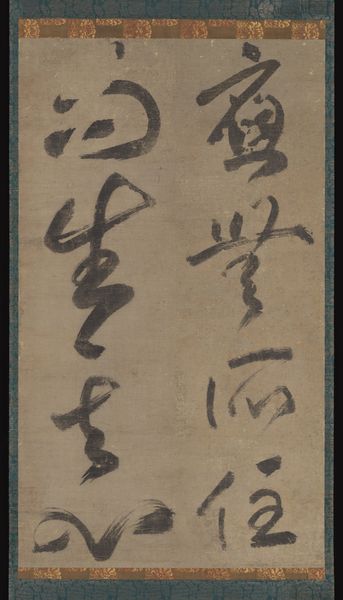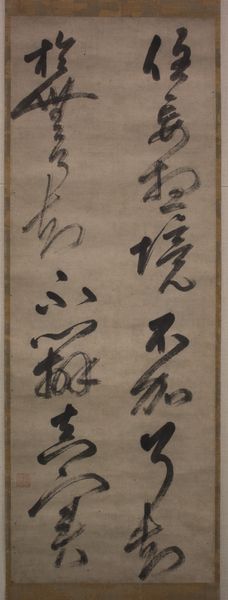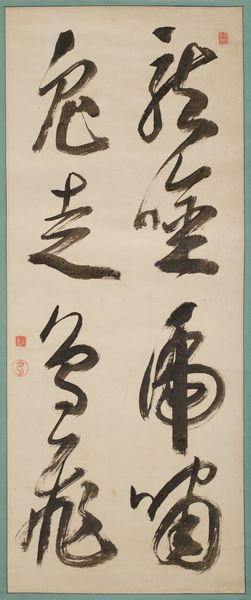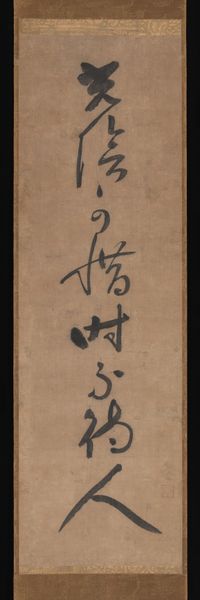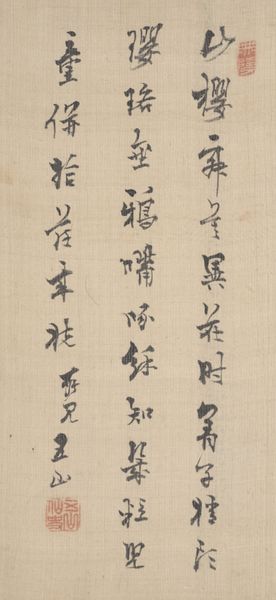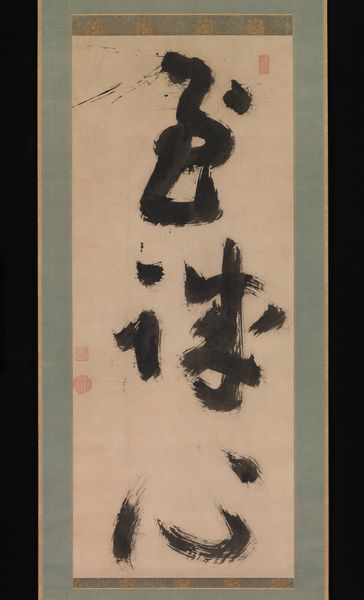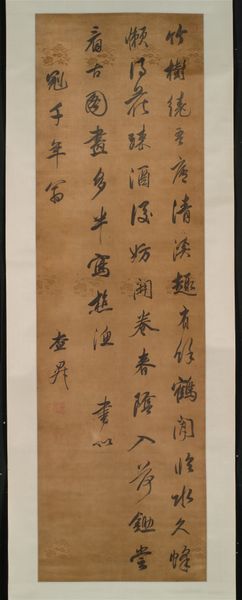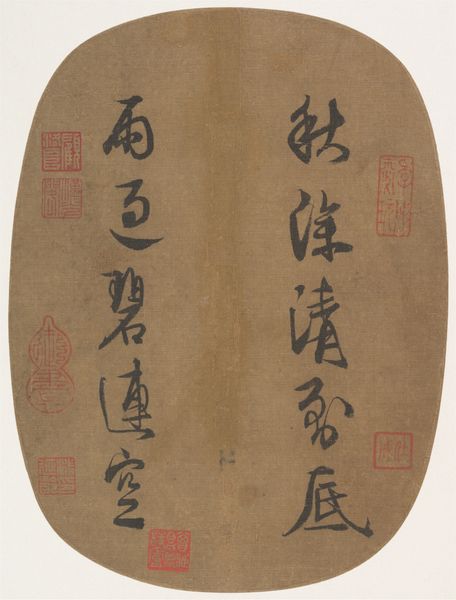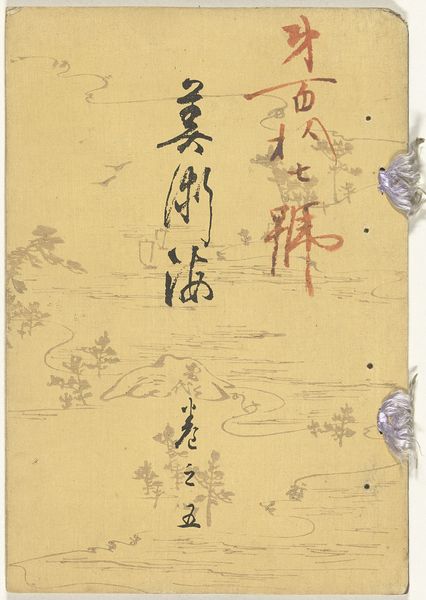
Buddhist Maxim on the Saving Power of Amida 1400 - 1452
0:00
0:00
textile, paper, ink
#
medieval
#
asian-art
#
textile
#
paper
#
ink
#
abstraction
#
calligraphy
Dimensions: Image (each scroll): 36 3/4 x 8 3/4 in. (93.4 x 22.3 cm) Overall with mounting (a): 67 1/8 x 9 1/2 in. (170.5 x 24.1 cm) Overall with knobs (a): 67 1/8 x 11 1/4 in. (170.5 x 28.6 cm) Overall with mounting (b): 67 x 9 1/2 in. (170.2 x 24.1 cm) Overall with knobs (b): 67 x 11 3/16 in. (170.2 x 28.4 cm)
Copyright: Public Domain
These scrolls, made by Gukyoku Reisai around the 15th century, use ink on paper to present a Buddhist maxim on the saving power of Amida. The materials themselves, humble as they are, speak volumes about the artistic and spiritual practices of the time. The choice of ink, carefully ground and mixed, reflects a deep understanding of its properties: how it flows, how it saturates the paper, how it can be manipulated to create a range of tonal effects. The paper, likely handmade, provides a receptive surface for the ink, its texture influencing the character of each brushstroke. The creation of the work would have demanded focused attention, and embodied the kind of contemplative discipline that also shapes a spiritual practice. Consider the labor involved in producing these materials, and the skill required to transform them into a work of art and devotion. Here, the act of making becomes a form of meditation, connecting the artist, the materials, and the message in a profound and meaningful way. Examining the materials and methods, we can appreciate this Buddhist maxim not just as a visual text, but as a testament to the power of focused creation.
Comments
No comments
Be the first to comment and join the conversation on the ultimate creative platform.
